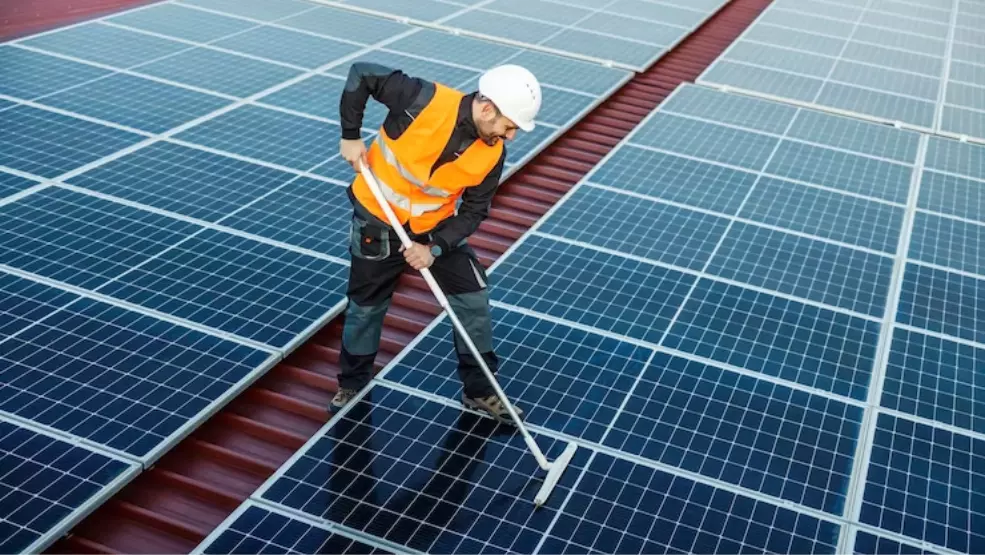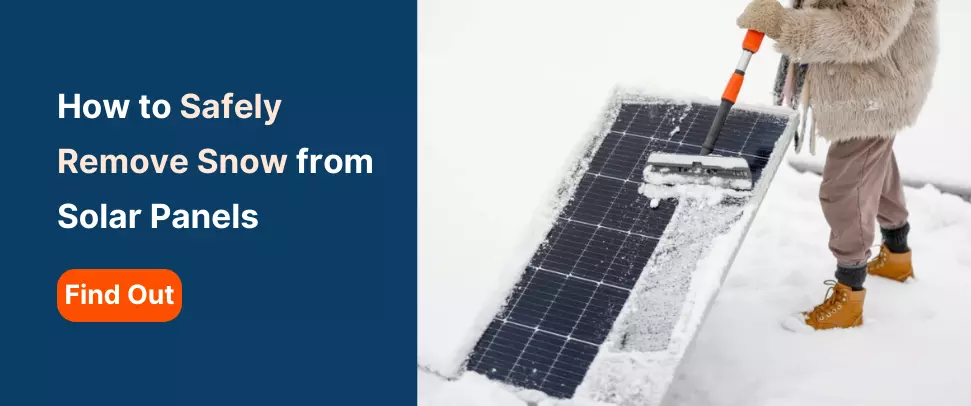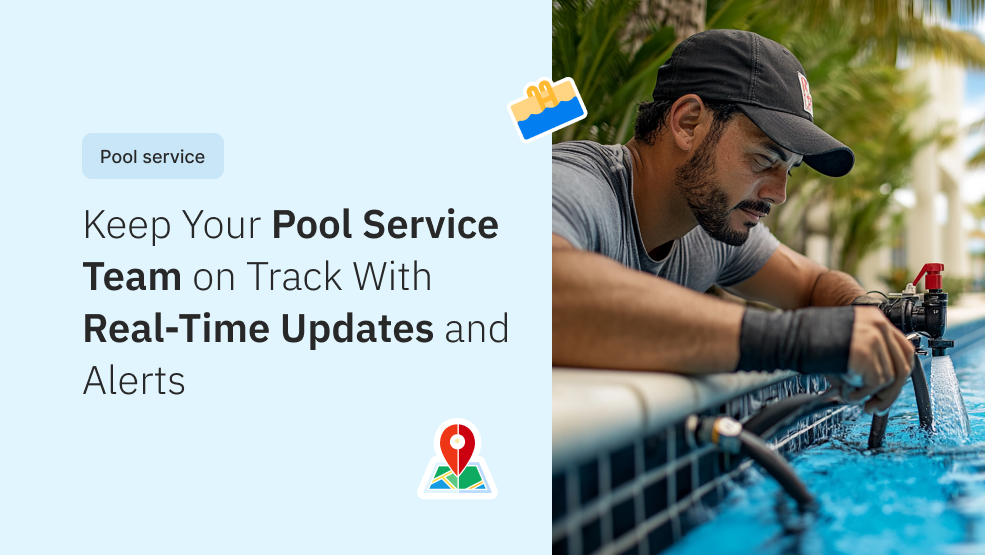Solar panel cleaning is crucial, as it is not just about saving the planet—it is also about saving money. Neglecting cleaning can lead to costly repairs and higher utility bills. So, the question is: will you clean them yourself or hire a professional? This article aims to provide insights to help you make the best choice for your solar panel maintenance needs.
Importance of solar panel cleaning
Clean panels are critical to the efficient production of solar energy. When you do not regularly clean your panels, dirt, and debris can build up, clouding the surface of the paneling can have a very real impact on their ability to efficiently create power. Cleaning solar panels can improve their efficiency by up to 20%, according to a study by the National Renewable Energy Laboratory (NREL). Clean solar panels benefit in the following ways:
- Increase the efficiency of energy production
- Maintain the lifespan of solar panels
- Improve the safety of the panels
- Save costs on repair or replacement

Solar panel cleaning techniques
There are several techniques available for cleaning solar panels, each with its own advantages and considerations. Let’s explore these methods:
1. Manual cleaning
In manual cleaning soft cloth or sponge is used to gently wipe down the panels. Then the panel is gently rinsed with a garden hose to clean out larger debris. This method is effective for removing light dust and dirt. This is the simplest method, but it is important to avoid applying too much pressure when cleaning, lest you inadvertently damage the panels.
2. Soap and water cleaning
A mild soap and water solution or any DIY solution is used in soap and water cleaning. This soap solution helps in breaking down grime and dirt. You have to ensure that you rinse the panels thoroughly, as any lingering soap residue could cloud the surface of the panels and affect their performance.
3. Chemical cleaning
At times, a stronger approach may be necessary. In these cases, chemical cleaning may be required. Chemical cleaning provides a deeper clean, even in tough-to-reach spots. Some caution is required when using chemicals. If the chemicals are not balanced correctly and used properly, it is possible to damage the panels.
4. High-pressure cleaning
High-pressure cleaning can be done by using a pressure washer yourself, or you can hire experts with industry-grade equipment. If you are doing it on your own, make sure to pick the right nozzle for the job and stay a safe distance away from what you are cleaning. When professionals handle it, they use heavy tools to make sure everything gets really clean.
5. Automatic cleaning
Embrace the future with automated systems that take care of the cleaning process for you. Robotic or automated cleaning setups can provide thorough and consistent cleaning, though they might come at a higher cost. Automatic cleaning is primarily in the commercial setup where there are large solar installations.

DIY solar panel cleaning
To clean your solar panels yourself, gather a soft brush, a bucket of soapy water, and a hose. Begin by giving the panels a gentle scrub to remove dust, then use soapy water to brush them. Rinse everything off and let the sun work its magic from there.
Pros
- It is cost-effective, as you don’t need to hire professionals.
- You can regularly clean, prevent dirt buildup and extend the life of your panels easily.
Cons
- Climbing on the roof can be risky; caution is needed.
- Cleaning can be time-consuming, especially for larger installations.
- Using abrasive materials or harsh chemicals might scratch or damage panels if not done carefully.
Professional solar panel cleaning
Professional solar panel cleaning involves hiring experts who use specialized equipment like robots to ensure your solar panels are spotless and performing at their best. Pros have the tools and knowledge to safely remove even the toughest grime, giving your panels a top-notch spa day.
Pros
- Trained cleaners know how to handle panels without causing damage.
- They have high-quality equipment for a thorough and quick cleaning.
- Professionals handle the risky task of climbing on roofs, reducing the danger to you.
Cons
- Hiring experts can be pricier than DIY methods.
- You will need to coordinate with the availability of professional services.
- Costs can add up if cleaning is performed too often.
Tools for solar panel cleaning
Thorough cleaning is impossible without tools. Proper tools not only make cleaning easier but also help maintain the cleanliness and longevity of surfaces. Using the right tools can help prevent damage to surfaces, ensuring they remain in good condition for longer.
- Soft bristle brush
- Squeegee
- Water hose or Pressure washer
- Cleaning solution
- Telescopic cleaning pole
- Robotic cleaners
- Drones
- Air blowers
- Gloves
- Ladder
Maintaining solar panels after cleaning
Simply installing solar panels does not guarantee that they will produce sufficient energy for your needs. Cleaning and maintaining your panels appropriately will have a significant impact on their life expectancy as well as their efficiency in producing power. Regular cleaning is the first step in maintaining your solar panels, but it is not the only step. Your maintenance regime can be divided into three parts:
- Cleaning
- Inspection
- Repair or Replacement
Reading our article “Solar Maintenance Checklist” will help prepare you to excel at solar maintenance. You can continue the maintenance task by monitoring the performance of the panels and the inverter. Monitoring the performance of solar panels is important because it helps detect potential problems with electricity generation. By keeping an eye on panel performance, you will begin to have a good sense of when it makes the most sense to clean them.
Best practices for solar panel cleaning
- Be careful while using ladders to get into the roof. Statistics by the Centers for Disease Control and Prevention highlight that more than 100 people die from ladder accidents in the United States.
- Turn off the solar panels before cleaning. During the day, the panels will be very hot. It is best to do the cleaning early in the morning or during winter seasons.
- If you see chewed wires in the solar panels, fix them before initiating the cleaning process. The reason is that even when you have switched off the solar panels, power may still flow through the damaged wires.
- Use warm water, not cold, while cleaning solar panels. Introducing cold water in the already burning panels will severely damage the tempered glass.
- Make sure not to use any harsh chemicals, abrasive materials, pressure washers, or scrub that could cause cracks and damage to the panels.
- Rinse the panels until any streaks or areas that may still be dirty is cleaned thoroughly.

DIY or professional cleaning?
While the idea of tackling solar panel cleaning yourself might seem feasible, it is important to consider the benefits of opting for a professional service. Of course, you have the capability to clean your solar panels, but there is a compelling case for leaving this task to the experts.
Professional solar panel cleaning services use technological tools, ensuring a swift and impeccably executed job. Their methods not only save water but also guarantee your safety during the cleaning process. What’s even more noteworthy is that these professionals offer comprehensive solar maintenance and monitoring services as part of their package.
Professional cleaning is best!
With these advantages in mind, it begs the question: Why not take advantage of a professional service? Commitment to excellence is what sets a professional service apart. Look for a service that not only offers specialized solar panel cleaning but also employs solar business software to enhance its operational efficiency.
Solar business software enables cleaning businesses to streamline their processes, schedule cleanings effectively, and provide exceptional service to customers. An exemplary example is US Energy Solutions, which used Zuper Solar Business Software to streamline their workflow, get real-time visibility into operations, and better organization.
Check out the customer story of US Energy Solutions and learn how they have improved their customer service and doubled customer satisfaction.
FAQs
1. Is cleaning solutions a must for solar panels?
No, cleaning solutions are not a must for solar panels. Harsh chemicals are often discouraged by experts due to their potential to harm the panels. You can simply use water along with a soft cloth or sponge to effectively clean the panels. For more stubborn dirt or debris, a mild soap solution mixed with water can be used.
2. How to prevent scratches while cleaning solar panels?
To prevent scratches while preventing solar panels, avoid using harsh chemicals or abrasive cleaners. Be gentle when cleaning, and don’t apply too much pressure on panels. Remember, walking on the panels is a no-go. Instead, employ a telescopic cleaning pole to maintain their pristine condition.
3. How do we maximize solar panel efficiency through cleaning?
By cleaning your solar panels regularly from dirt, debris, soot, tree sap, bird droppings, snow, and ice, you are ensuring there is nothing bothering sunlight absorption or power generation. Thereby helping to maximize solar panel efficiency.
4. How to do winter maintenance of solar panels?
In winter, make sure to remove snow and ice from your panels using a soft brush or gentle snow rake. Check often for dirt and things that might block the sunlight. Tilt the panels correctly toward the lower sun. Also, keep an eye on how well your panels work and fix any problems quickly to make lots of energy during the colder months.
5. What is rain’s impact on solar panel cleanliness?
While rain is beneficial for naturally cleansing solar panels by removing dirt and dust, it can sometimes create issues. Rainwater might become stagnant on the panels, leaving behind residue. Therefore, solely relying on rain for solar panel cleanliness might not be ideal. To ensure effective maintenance, it is recommended to address any standing water by gently drying it with soft towels
6. How to clean tilted solar panels?
Tilted solar panels are frequently positioned higher on the roof compared to flat panels, which can make them more challenging to access. To reach these elevated installations, a ladder is typically employed. Once atop the roof, the standard cleaning procedure can be followed to maintain the panels. Just ensure your safety while climbing the ladder, or it is best to leave it to professional cleaning services.
Step up and be a force for good. For every T-shirt you wear, 2700 L of water is consumed. You hold the power to reclaim gallons of water with every garment you wear. Choose minimalism; Save water.
Mindful closet for a sustainable future!








